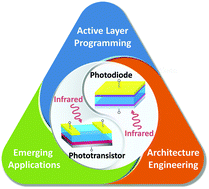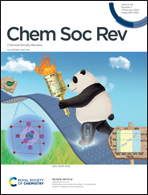Organic photodiodes and phototransistors toward infrared detection: materials, devices, and applications
Abstract
Because of their advantages, including easy tunability of optical and electrical properties by tailoring the molecular structure, flexibility, and compatibility with a low-temperature fabricating process, the use of organic semiconductors (OSCs) as active layers has shown strong competitiveness as candidates for use in next-generation high-sensitivity organic photodetectors (OPDs). Infrared (IR) OPDs that are sensitive to illumination at wavelengths higher than 780 nm have been rapidly developed in recent years driven by potential applications such as remote control, night vision, and imaging as well as biomedical monitoring. In this review, after a brief illustration of the mechanisms, we summarize the recent advances in high-performance IR organic photodiodes (OPDIs) and organic phototransistors (OPTs). We will highlight the state-of-the-art protocols for constructing qualified IR OPDs, including new OSCs with excellent photoelectric properties, optimization of active-layer-fabrication processes, and novel device architectures. Thereafter, we will discuss the IR organic light detector as a platform for integrated applications, such as health monitoring, spectrometric analysis, and electronic eyes. This review aims to provide readers with a deeper understanding of the design of future IR OPDs and IR-OPD-based integrated practices.



 Please wait while we load your content...
Please wait while we load your content...